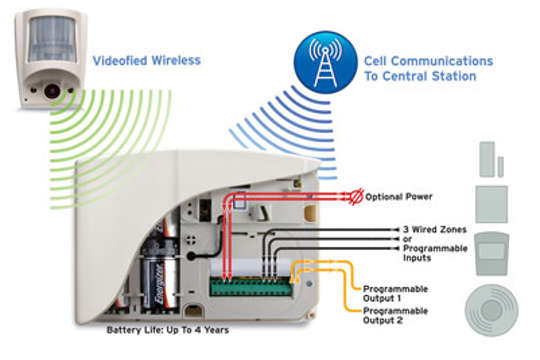The Videofied security system uses a software named Frontel to monitor alarm status. Frontel uses an insecure custom protocol to communicate with its Frontel server.
The custom protocol is running on TCP port 888. The protocol performs an authentication handshake using AES-128 and a pre-shared key, and then sends data.
The following CVEs have been assigned:
CVE-2015-8252: Use of Hard-coded Cryptographic Key
The authentication protocol uses a pre-shared key that entirely derived from the serial number of the device. This serial number is transmitted in the clear, allowing an attacker to determine the key.
CVE-2015-8253: Missing Encryption of Sensitive Data
Messages and videos are sent unencrypted after the AES authentication handshake. The messages are sent in plain text, and the videos are sent as MPEG video.
CVE-2015-8254: Insufficient Verification of Data Authenticity
Messages are sent without any integrity protection of the data. Messages may be spoofed to, for example, send false alarm signals or deactivate alarms.
RSI Video Technologies has released an update to Frontel that introduces Frontel protocol version 3 to address these issues.Affected users should receive the update over the next month (by end of December 2015). Affected users are encouraged to update as soon as possible, and to contact RSI with any questions or concerns.
Reference
http://cybergibbons.com/alarms-2/multiple-serious-vulnerabilities-in-rsi-videofieds-alarm-protocol/
Credit
Thanks to Andrew Tierney for reporting this vulnerability.































